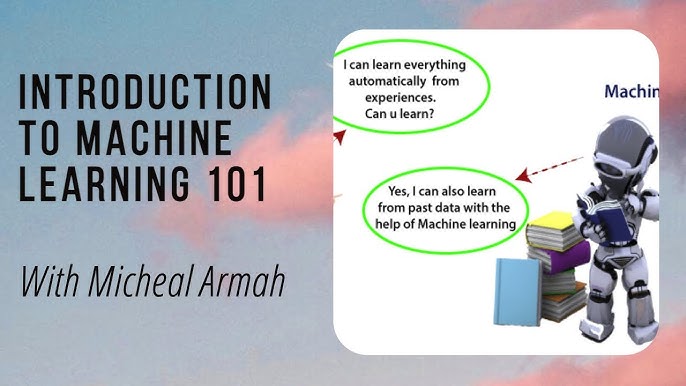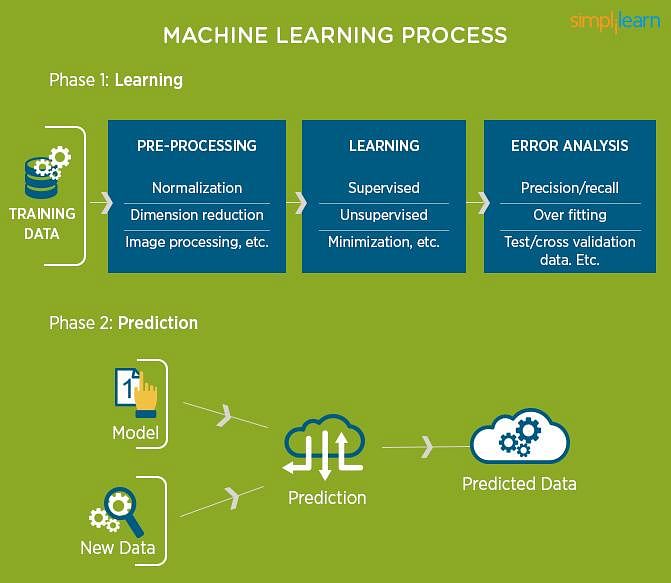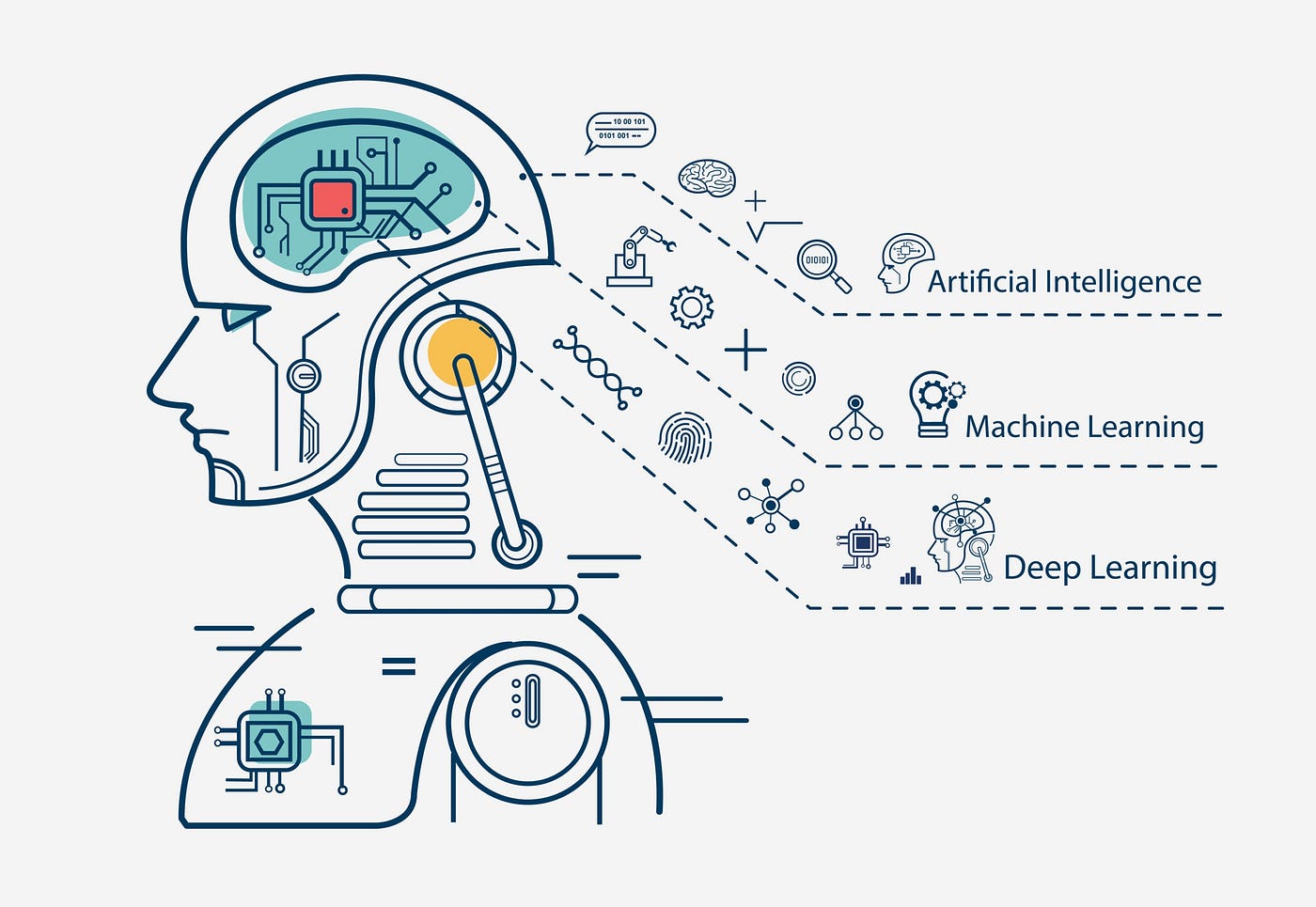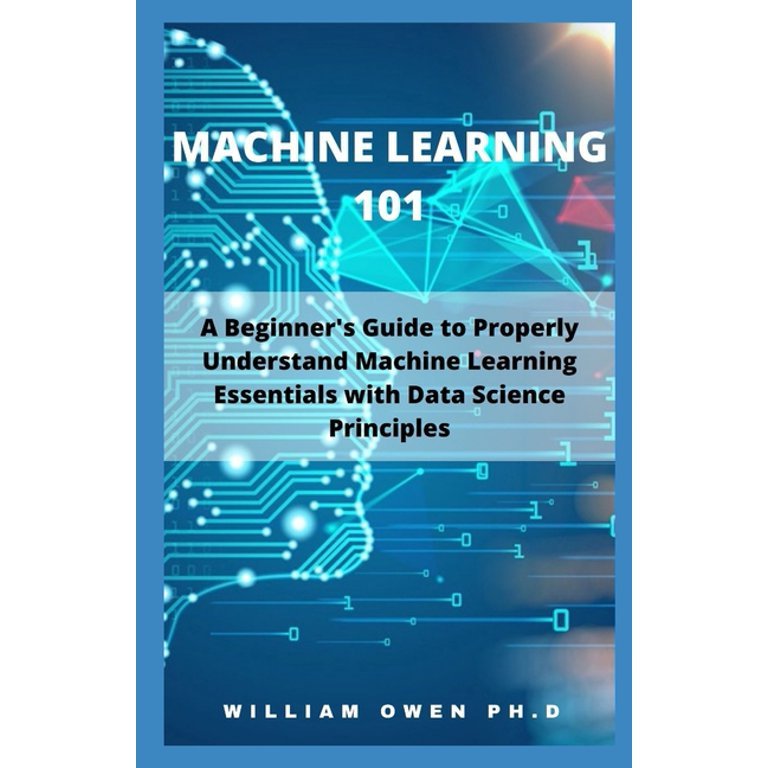
Introduction
What is Machine Learning?
Machine Learning (ML) is a fascinating subset of artificial intelligence that enables systems to learn from data, improve over time, and make predictions or decisions without explicit programming. Think of it as teaching computers to learn from experience, much like how humans learn from their surroundings. For instance, when you teach a child to recognize animals, you show them various pictures and explain; similarly, machine learning models are trained on large datasets to identify patterns and make sense of the world around them.
Why Machine Learning is Important for Beginners
Understanding the Basics of Machine Learning is crucial for newcomers aiming to tap into today’s technology-driven landscape. As machine learning continues to evolve, its applications impact various industries, from healthcare to finance. Here are some key reasons why beginners should dive into this field:
- Career Opportunities: As businesses adopt data-driven strategies, there’s an increasing demand for ML professionals.
- Problem-Solving Skills: Learning ML enhances critical thinking and problem-solving abilities.
- Innovation: It opens doors to innovate and create cutting-edge solutions that can reshape the future.
With these insights, it’s clear that exploring machine learning not only sharpens one’s skills but also paves the way for a fulfilling career.

Basics of Machine Learning
Definition and Fundamentals
Building on our understanding of Machine Learning, it’s essential to grasp its definition and the fundamental concepts that underlie this technology. At its core, machine learning refers to algorithms and statistical models that enable computers to perform specific tasks without direct human intervention. This process usually involves feeding large amounts of data into a model to identify patterns.
A personal anecdote here: Imagine creating a playlist based on your music preferences. The more you listen and rate songs, the better your playlist becomes over time. That’s machine learning in action!
Types of Machine Learning
When diving deeper into the Basics of Machine Learning, it helps to recognize the various types that novice learners will encounter. These types include:
- Supervised Learning: The model learns from labeled data, using input-output pairs to make predictions. For example, predicting house prices based on various features.
- Unsupervised Learning: No labeled data is provided; the model identifies hidden patterns or intrinsic structures from input data, like clustering customers based on purchasing behavior.
- Reinforcement Learning: This approach involves algorithms that learn by receiving rewards or penalties, similar to how a child learns actions through trial and error.
Understanding these concepts lays a strong foundation for navigating the exciting world of machine learning.

How Machine Learning Works
Data Preprocessing
To truly understand how machine learning works, it’s vital to start with data preprocessing. This step is akin to setting the stage before a grand performance. Raw data can be messy and incomplete, much like a jumbled puzzle. During preprocessing, data scientists clean, normalize, and transform data into a suitable format for analysis.
For instance, think about preparing your ingredients before cooking a new recipe. You wouldn’t just throw them into the pot unwashed or unchopped, right? In the same way, machine learning models require high-quality, well-prepared data to yield accurate results. Common preprocessing tasks include:
- Handling missing values
- Encoding categorical variables
- Normalizing or standardizing numerical features
Building and Training Machine Learning Models
Once the data is prepped, the next step is building and training models. This involves selecting an appropriate algorithm and feeding the preprocessed data into it. It’s similar to teaching a class; the model learns from the data through examples, adjusting its parameters as it becomes better at predicting outcomes.
Evaluating Model Performance
Finally, evaluating model performance is essential to ensure reliability. Just as a teacher assesses student progress, data scientists use metrics such as accuracy, precision, and recall to determine how well the model performs. If the results aren’t satisfactory, adjustments can be made, and the process can be repeated. This iterative cycle allows for continuous improvement, making machine learning both a science and an art.

Common Machine Learning Algorithms
As we delve into the realm of machine learning, it’s essential to familiarize ourselves with some common algorithms that form the backbone of this field. Each algorithm has its unique strengths and applications, similar to how different tools in a toolbox serve specific purposes.
Linear Regression
Starting with Linear Regression, this algorithm is a go-to for predicting continuous outcomes. Imagine trying to forecast a student’s final grade based on their exam scores. Linear regression draws a straight line through the data points, showing the relationship between the input and output variables. It’s straightforward and effective, especially when the relationship is linear.
Decision Trees
Next, we have Decision Trees. Think of these as flowcharts for decision-making. They split the data at various points based on specific criteria, much like deciding what to wear depending on the weather. Decision trees are simple to interpret and visualize, making them a favorite among beginners.
Support Vector Machines
Moving on, Support Vector Machines (SVMs) focus on finding the optimal boundary (or hyperplane) between different classes in the data. This is akin to separating apples from oranges in a fruit basket. SVMs excel in high-dimensional spaces, providing robust classification even with complex datasets.
Neural Networks
Lastly, we have Neural Networks, inspired by the human brain. They consist of layers of interconnected nodes (or neurons) that process information. Neural networks are incredibly powerful for tasks like image and speech recognition. Imagine teaching a child to recognize different animals through pictures; neural networks operate similarly by learning from vast amounts of data.
Understanding these algorithms equips aspiring data scientists with essential tools to tackle a range of predictive modeling challenges in their journey.

Practical Applications of Machine Learning
Having explored the foundational algorithms of machine learning, it’s exciting to shift our focus to the practical applications where they make a significant impact. These applications span across various industries, showcasing the versatility of machine learning.
Image Recognition
One of the most prominent applications is Image Recognition. This technology enables computers to identify and classify objects within images. For example, Facebook uses image recognition to automatically tag friends in photos. Imagine uploading a sunset picture, and the software automatically suggests tagging you and your friends! This process leverages convolutional neural networks to analyze pixels and detect patterns.
Natural Language Processing
Next up is Natural Language Processing (NLP), which allows machines to understand and produce human language. Think about virtual assistants like Siri or Alexa. They process voice commands and provide responses, making interactions more intuitive. NLP bridges the gap between human communication and machine comprehension, relying on algorithms to interpret context, sentiment, and grammar.
Predictive Analytics
Lastly, Predictive Analytics utilizes machine learning to forecast future trends based on historical data. Companies like Netflix use predictive models to suggest shows and movies tailored to your preferences. Picture this: after watching a few documentaries, you get a recommendation for a gripping thriller that you may not have discovered otherwise. This anticipatory nature enhances user experience and boosts engagement.
Together, these applications illustrate how machine learning drives innovation and efficiency in real-world scenarios, transforming everyday experiences.

Tools and Resources for Machine Learning Beginners
As beginners embark on their journey into machine learning, having the right tools and resources can make all the difference. Fortunately, there are myriad options available that cater to different learning styles and preferences.
Popular Machine Learning Libraries
To kick things off, let’s talk about popular machine learning libraries. These libraries serve as essential building blocks for any machine learning project. Here are a few must-know ones:
- TensorFlow: Developed by Google, it’s excellent for building deep learning models.
- Scikit-learn: Ideal for beginners, it provides easy-to-use tools for data mining and data analysis.
- Keras: A high-level neural networks API that runs on top of TensorFlow, making it user-friendly for constructing deep learning models.
- PyTorch: Known for its flexibility and ease of use, it’s favored in academic research and production.
A personal tip: starting with Scikit-learn can provide a solid foundation before venturing into more complex libraries like TensorFlow.
Online Courses and Tutorials
Next, let’s explore online courses and tutorials. Platforms like Coursera, edX, and Udacity offer fantastic courses that cater to all levels. For instance, Andrew Ng’s course on Coursera is highly recommended for its clarity and depth.
Additionally, YouTube is brimming with free tutorials that can help visualize concepts in action. Engaging with these resources can significantly enhance your understanding and provide hands-on experience, setting the stage for successful machine learning endeavors.
Challenges and Ethical Considerations
As exciting as the world of machine learning can be, it’s important to address the challenges and ethical considerations that come with it. These issues not only affect the technology itself but also the society in which it operates.
Bias in Machine Learning
One significant challenge is bias in machine learning. Because algorithms learn from historical data, they can inadvertently perpetuate existing biases. For example, if a hiring algorithm is trained on data that reflects past hiring decisions, it may favor candidates from certain demographics over others, leading to unfair outcomes.
To illustrate, think about a job application system that favors candidates who attended specific universities. This can result in a lack of diverse talent, ultimately harming innovation. Addressing bias requires careful examination and recalibration of datasets, ensuring they are representative and fair.
Privacy and Security Concerns
Another pressing issue is privacy and security concerns. With machine learning systems processing vast amounts of data, safeguarding personal information becomes paramount. Instances of data breaches are alarmingly commonplace, leading to potential misuse of sensitive information.
For instance, consider using a fitness app that collects user health data. If hacked, this information could be used maliciously. Therefore, implementing robust security protocols and adhering to data privacy regulations is crucial for fostering trust in machine learning solutions.
By confronting these challenges head-on, developers and organizations can contribute to a more ethical and responsible machine learning landscape.
Future Trends in Machine Learning
As we look ahead, the field of machine learning is poised for substantial advancements and innovations that promise to reshape our world. Keeping an eye on these trends can prepare aspiring data scientists and tech enthusiasts for the unfolding opportunities.
Advancements and Innovations
One major trend is the rise of explainable AI, which focuses on making machine learning models more transparent and interpretable. For example, as organizations deploy AI in high-stakes decisions like healthcare or finance, understanding how models arrive at their conclusions becomes critical.
Additionally, innovations in automated machine learning (AutoML) are gaining traction, allowing users without deep expertise to build and deploy models effortlessly. Imagine a busy small business owner who can quickly implement predictive analytics tools to optimize inventory without needing a data science degree!
Impact on Various Industries
The impact of machine learning also extends across various industries. For instance:
- Healthcare: Enhanced diagnostic tools can analyze medical images faster and more accurately than human experts.
- Finance: Algorithms will better detect fraudulent transactions in real time.
- Transportation: AI-driven analytics will optimize routes for delivery services, reducing costs and improving efficiency.
These trends not only facilitate efficiency and innovation but also emphasize the necessity for ethical considerations as machine learning continues to integrate deeper into our daily lives.

